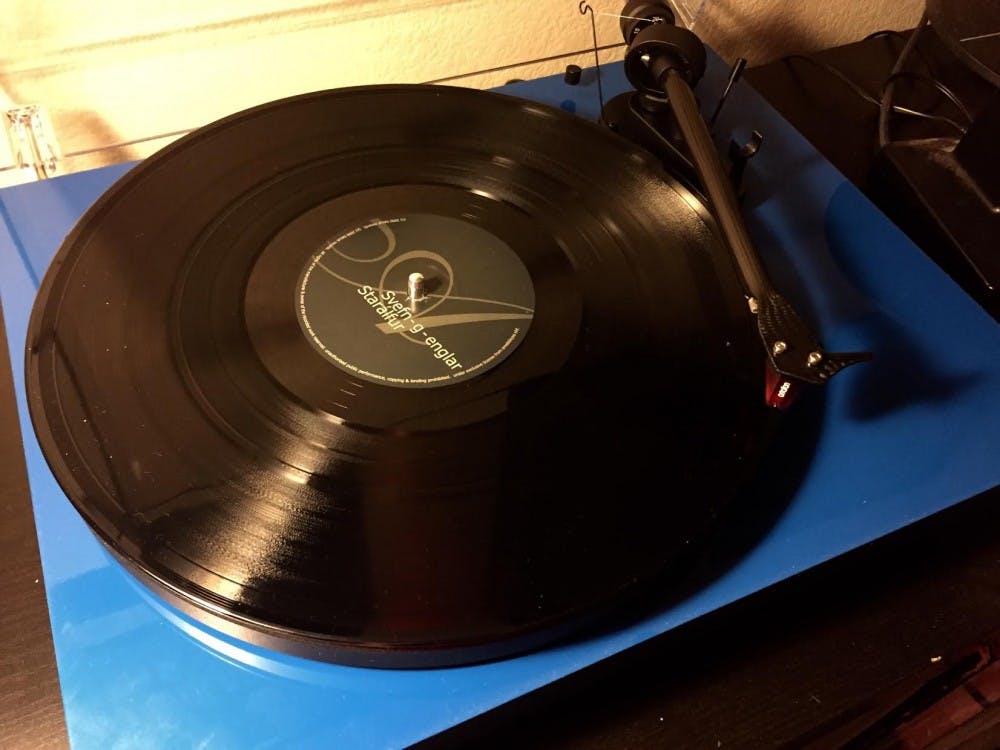
Welcome to The Vinyl Voyager. My weekly diary of what music on vinyl, in its purest form, means to me. Track-by-track, note-by-note: Here’s what influences me and keeps me moving forward in a world that won’t stop pushing back.
Every year, a slew of genuinely great albums are released and battled over for spots on countless “best of the year” lists. Creating a record worthy enough to stand above the sea of sound put out during a single year is no small feat. Piecing together a maelstrom of sonic beautification so universally beloved and acclaimed that its fight to lay in the “all-time greats” conversation is an entirely more precious accomplishment.
Sigur Rós, from Iceland, cracked the standard post-rock precedent and imprinted its 1999 album “Ágætis byrjun” onto the minds of all those who would listen – catapulting the band's career into those elusive “all-time greats” talks.
Guided by siren vocalist and bowed guitarist Jón Þór "Jónsi" Birgisson, Sigur Rós synonymous with gorgeous landscapes of sounds and luscious crescendos, often book-ended with ambient works of serenity. “Ágætis byrjun” is an ethereal experience and a premier example of how vinyl can bring new life to recordings.
The embryo outlined on the album cover resonates the tone throughout “Ágætis byrjun.” It’s at peace, relaxing, ready to grow into a body of lush harmonics and listened to on freshly cleaned, virgin black vinyl of course.
1. “Svefn-g-englar”
Beginning with radar pings and haunting church organs, “Svefn-g-englar” feels like a submarine floating forth into an oceanic abyss, its crew anxious for contact with an enemy vessel and gazing with paranoid eyes into an encroaching death. Jónsi’s bowed guitar groans like metal bending under pressure as his falsetto voice beckons those on board to give into the warmth of dying.
If it sounds like I’m taking liberties with interpreting this song, I am. Being that the entire album is in Icelandic and unintelligible, listeners are left to make their own meanings — a fascinating concept that makes the whole experience much more personal.
2. “Starálfur”
Introducing the grand string arrangements peppered throughout is “Starálfur,” a stark departure from the depressed hallows in “Svefn-g-englar.” An elegant repition of piano notes underlines the sweeping orchestral score that acts like brush strokes on a painting of cascading Icelandic hills and rivers.
3. “Flugufrelsarinn”
The delicacy of keyboardist Kjartan Sveinsson and drummer Ágúst Ævar Gunnarsson gives Sigur Rós the pliable backbone it needs for conveying such ranging moods within a single album. The desperation in Jónsi’s ballad-esque voice is underlined by Sveinsson’s church organ and Gunnarsson’s wire brushing on a snare drum. This isn’t a standout track honestly, although it's beautiful in its own right.
4. “Ny batterí”
This track has Sigur Rós exploring its knack for melding subtlety and intensity together through extended crescendos and sudden changes in tone. The first five minutes are quiet, hardly preparing the listener for the crashing drums and squealing horns.
5. “Hjartað hamast”
Rounding out the first half of “Ágætis byrjun” is a strange blending of jazzy keyboard, backing harmonica and guttural waves of violin-bowed guitar. The density of this track can be jarring and challenging to grasp. Scrape away this tough first impression and a stunning piece of a sonic experimentation will reveal itself to you.
6. “Viðrar vel til loftárása"
Featuring a contender for most heartbreaking piano score ever written, this track is an emotive journey of both euphoric highs and recessions into melancholia. The ten minute narrative leaves me breathless every time. An exhilarating string arrangement at the end ascends “Viðrar vel til loftárása" into an angelic place worthy only of those untouched by life’s grim realities.
7. “Olsen Olsen”
It’s here where Sigur Rós’ songwriting is showcased best, as “Olsen Olsen” stuns in its breadth and scope. Opening with strumming bass guitar and understated drumming, Jónsi’s voice caresses in the distance like chants atop a mountain until a flittering flute melody foreshadows the philharmonic climax to come. Blaring horns, an impeccable choir and clanging pianos culminate into a soaring finale that defines Sigur Rós’ uniqueness within all musical spectrums.
8. “Ágætis byrjun”
The title track moves into straightforwardness with acoustic balladry and easy to grasp vocal melodies. As the final structured song, “Ágætis byrjun” wraps the album in a warm blanket and ushers the immense project into a serene dream world
9. “Avalon”
Playing like the music of a tragic movie’s credits, “Avalon” is an ambient send off for the submarine sailors in “Svefn-g-englar” who died in action. It’s an unorthodox ending, but somehow feels authentic among the grandness that came before it.
Tell the reporter about your vinyl collection at nlatona@asu.edu or follow @Bigtonemeaty on Twitter.
Like The State Press on Facebook and follow @statepress on Twitter.





